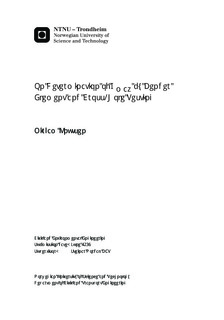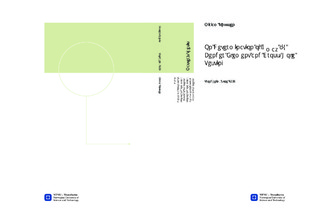| dc.description.abstract | The small-strain shear modulus, Gmax, is an important parameter in geodynamic problems and for advanced modelling. Gmax is influenced by several factors, which complicates the assessment and interpretation of test results. Due to sample disturbance, values measured in the laboratory may be lower than in the field. The use of Gmax as a measure of sample disturbance has previously been investigated. Different testing methods for determination of Gmax are described in this thesis, with a presentation of advantages and limitations on the basis of literature. Field tests can be performed either from the ground surface or in boreholes. For determination of Gmax in the laboratory, the use of bender elements in conventional test devices, such as the triaxial apparatus, has become a common procedure. With bender elements, several repetitive tests can be performed, and the sample can subsequently be tested for other soil characteristics. The initial part of this study concerned implementation of bender elements in a triaxial apparatus at the NTNU geotechnical laboratory. Subsequently, determination of Gmax by bender element testing was emphasized. Clay samples from three different sites were used, the Stjørdal, Tiller and Esp sites. At the Esp site, a limited field testing program was also performed, using a cross-hole method for determination of in situ Gmax. Laboratory measurements on two samples of Esp clay gave Gmax of 27 MPa and 30 MPa, after long-term consolidation. In situ measurements gave consistent results, with an average Gmax of 47 MPa. Values measured in the laboratory are seen to be about 40 % lower than values measured in the field. However, it should be noted that in the bender element test, the direction of propagation of the s-wave is vertical, while in the cross-hole test, it is horizontal. Consequently, due to anisotropy, a direct comparison may be somewhat erroneous.Factors influencing Gmax are presented on the basis of literature. Void ratio, plasticity index and soil structure are seen to be important factors. Gmax also show a stress dependency, increasing with increasing overburden pressure. Literature regarding Gmax as a measure of sample disturbance is also presented. For evaluation of the development of Gmax with time, long-term consolidation was performed. An evident increase in Gmax with time of consolidation was observed, with a correlation to axial strain. This is assumed to be due to aging effects, bringing the sample closer to its in situ state. Observations also showed a larger increase for 54 mm tube samples than for block samples, indicating some correlation between sample quality and Gmax. Reconsolidation seems to compensate for some effects of disturbance. However, it is suggested that destructuration of the soil is an important factor of sample disturbance which is not eliminated by reconsolidation. Bender element testing of the Esp clay was also performed on a sample of half height (5 cm). The results showed Gmax values about 25 % lower than those of the full-height samples. This indicates the existence of some near-field effects influencing the shear wave velocity close to the elements.Interpretation of cross-hole results revealed some difficulties regarding identification of the shear wave. The equipment should be further developed so that receivers are in direct contact with the soil. Lack of knowledge regarding an assumed complex environment in the triaxial cell, may have been a limitation when interpreting laboratory results. A model of the bender element test in a finite element method program, such as Plaxis, may be of interest for investigation of the actual condition of wave propagation. Further work is also proposed regarding the use of Gmax as a measure on sample disturbance. | nb_NO |

